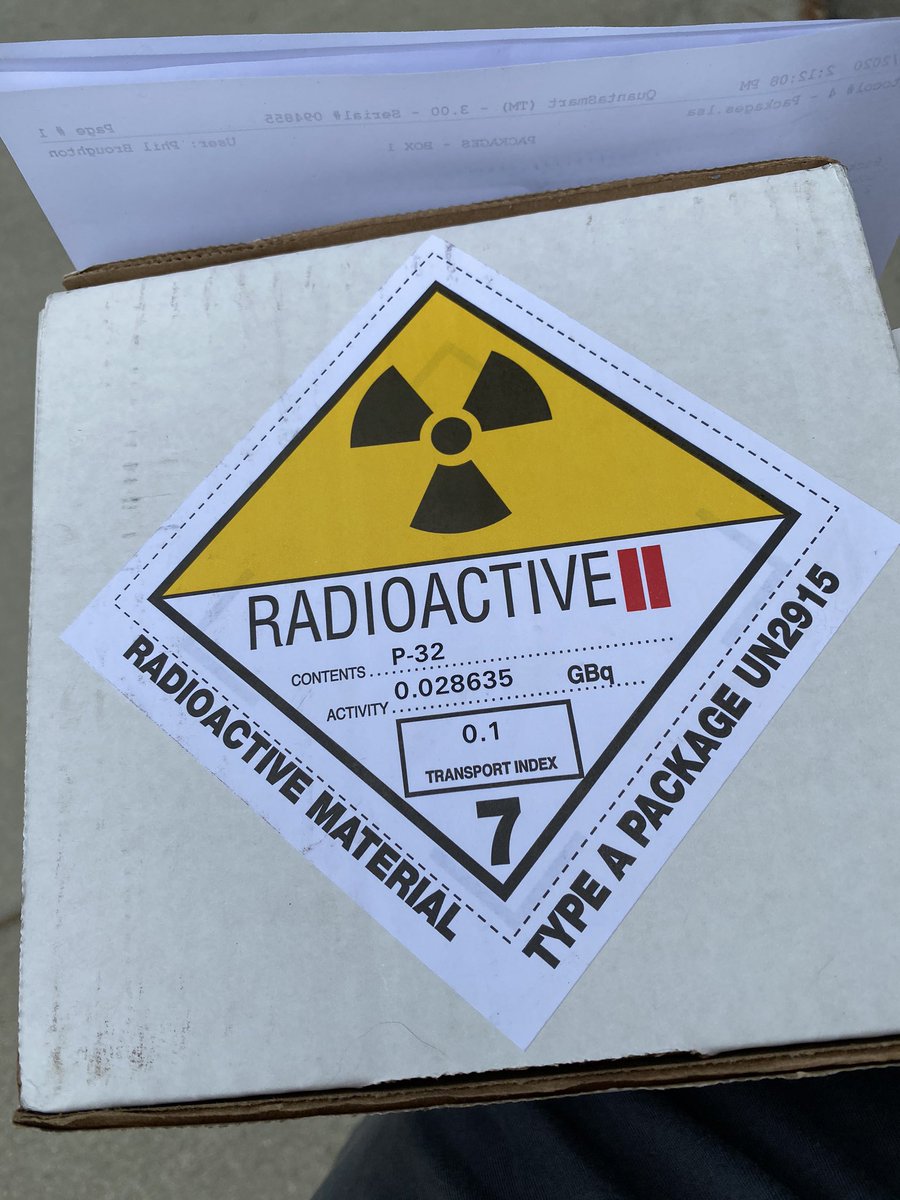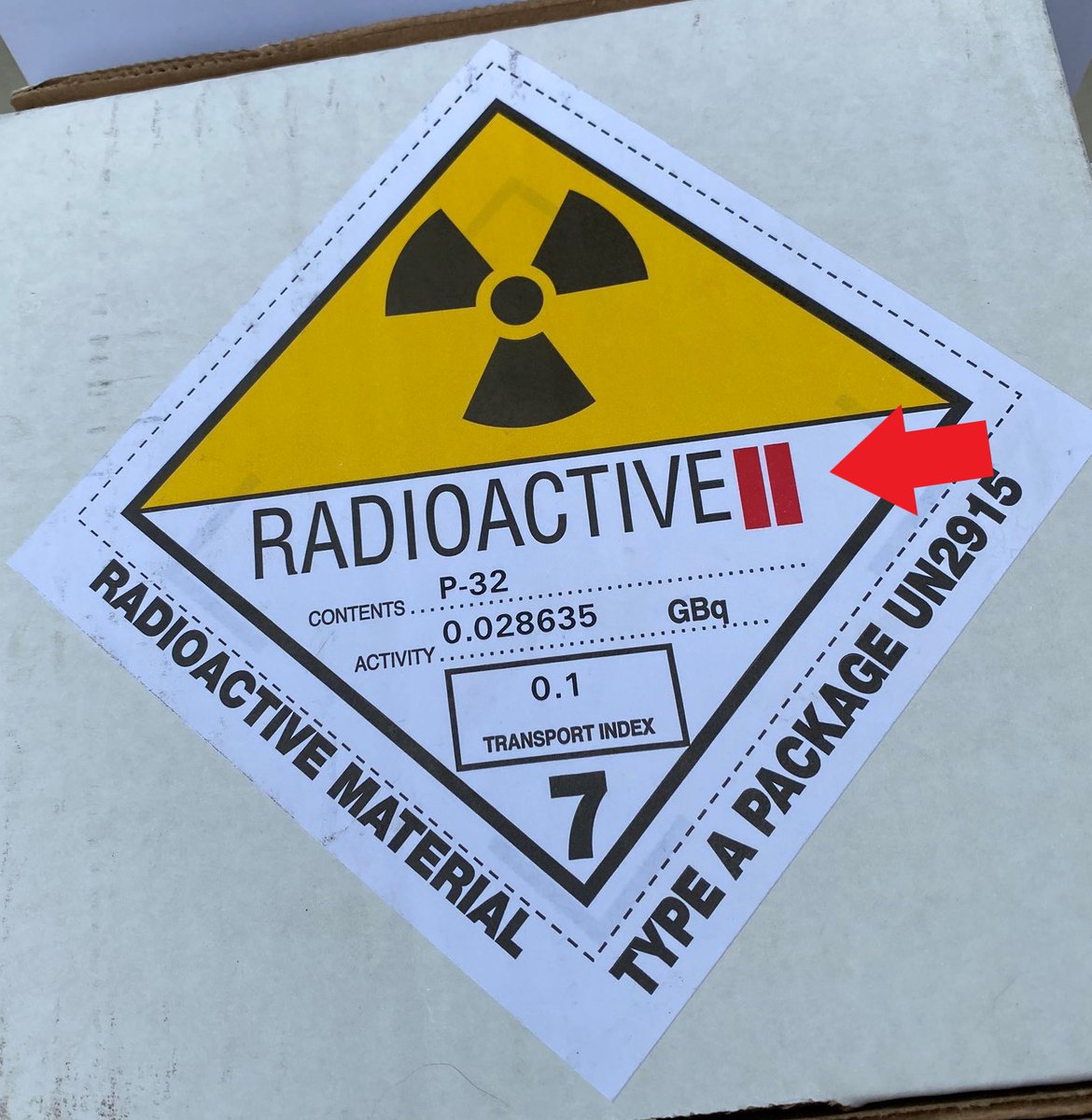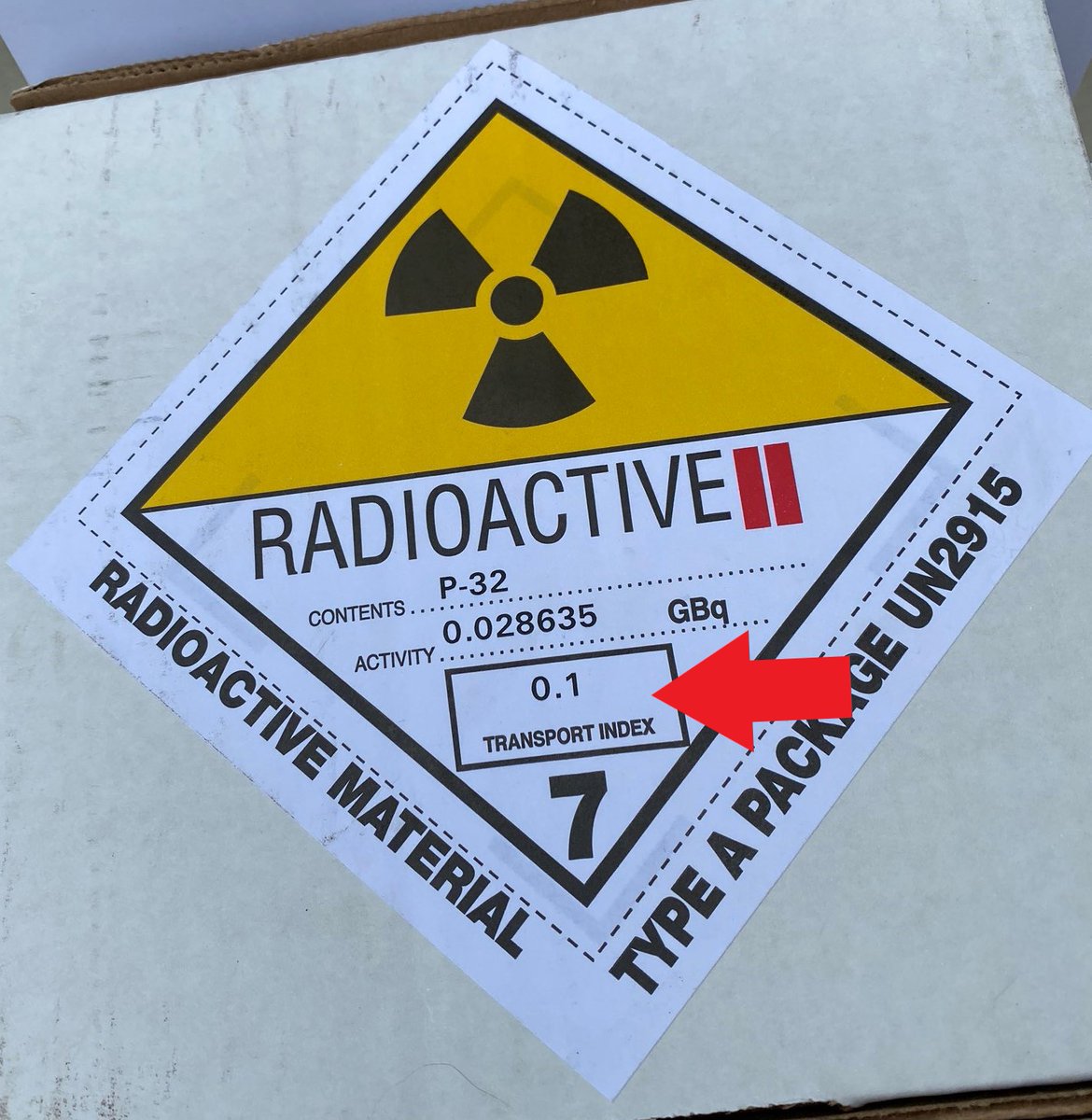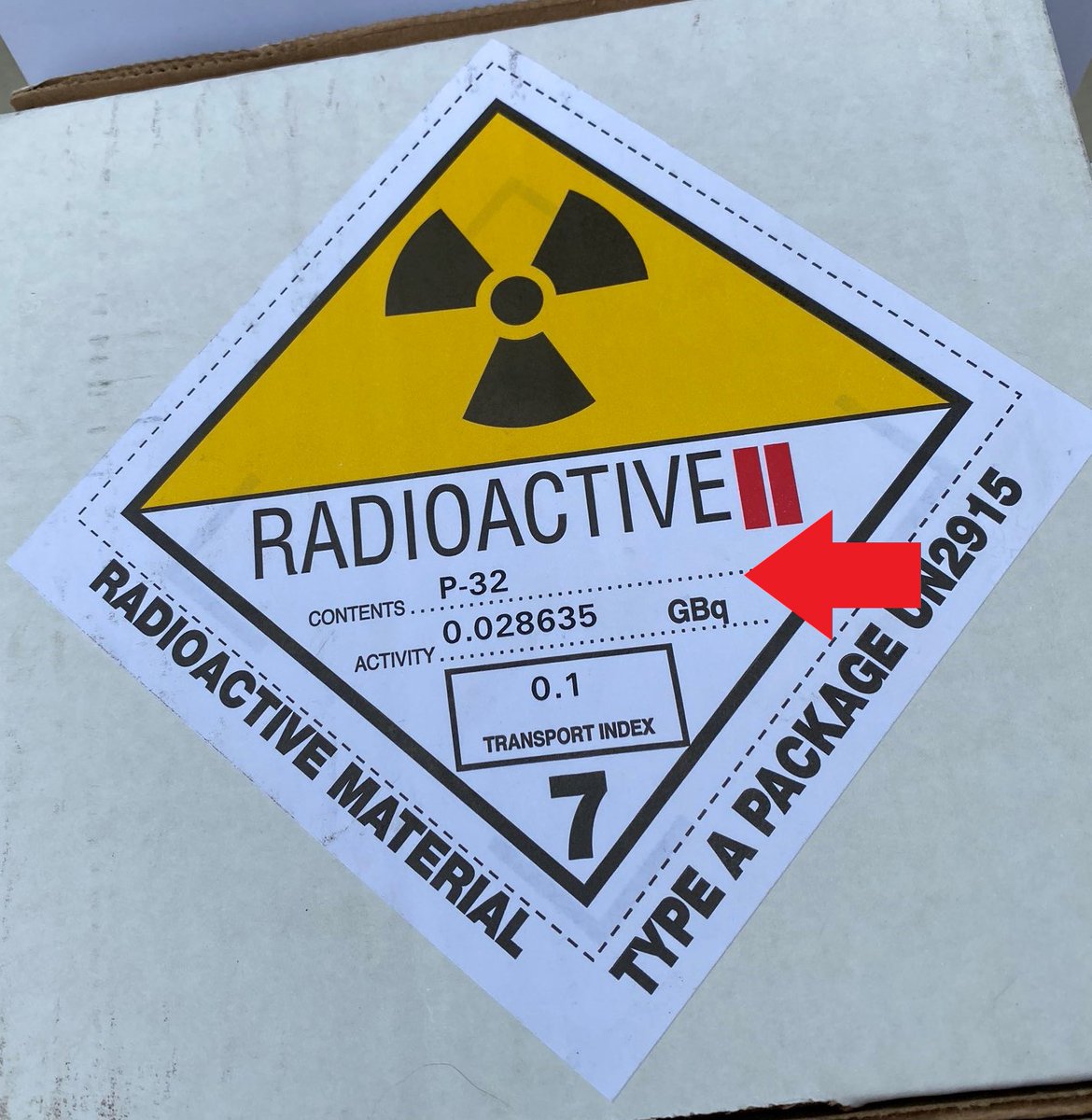One of the joys of carrying around a rad marked package is that everyone gives you plenty of social distance.
Since it appears that I need to say it for the smartass crowd:
DO NOT apply radioactive labels to things that aren’t radioactive.
There are activity limits for when you do & don’t use these labels. These are DOT regs which are rather stringently applied.
DO NOT apply radioactive labels to things that aren’t radioactive.
There are activity limits for when you do & don’t use these labels. These are DOT regs which are rather stringently applied.
I have been asked if I could please explain what this label in some detail.
[cracks knuckles] Okay, lets start with the number at the bottom. In the DOT hazardous materials communication system, 7 denotes materials where the PRIMARY hazard is radioactivity.
[cracks knuckles] Okay, lets start with the number at the bottom. In the DOT hazardous materials communication system, 7 denotes materials where the PRIMARY hazard is radioactivity.
The DOT labels/placards run from 1 to 9 where a lower number denotes a higher and more immediate hazard in the event of a *transport* accident. Accordingly, the 1& #39;s are explosives.
Now, while you might be frightened of radioactivity and contamination incidents are annoying difficult to clean up, they aren& #39;t THAT dangerous. Not compared to your tanker truck of gasoline (DOT 3 - Flammable Liquid) or the overturned Terminix truck (DOT 6 - Poison)
So, when you have a DOT 7 sticker or placard, you know that you have decent amount of activity and measurable dose rate. Which brings us to the next part of the label, RADIOACTIVE II.
We decided we needed to break radioactive materials shipments down into different flavors: Radioactive I, Radioactive II and, heaven forbid you ever see a vehicle with it, Radioactive III.
The flavors:
Rad I: contact dose rate < .005mSv/hr
Rad II: contact dose rate < .5mSv/hr AND <.01mSv/hr at 1m
Rad III: contact dose rate > .5mSv/hr OR <.01mSv/hr at 1m
I have only ever seen one vehicle with a Rad III on it and it was hauling interesting things
Rad I: contact dose rate < .005mSv/hr
Rad II: contact dose rate < .5mSv/hr AND <.01mSv/hr at 1m
Rad III: contact dose rate > .5mSv/hr OR <.01mSv/hr at 1m
I have only ever seen one vehicle with a Rad III on it and it was hauling interesting things
You are required to write on the label what that contact dose rate is. In the United States, you write it WITHOUT UNITS, in the Transport Index box expressed in the classic mrem/hr units. This is annoying to people who like and commonly think in SI units.
For example, Canadians.
For example, Canadians.
For packages, you do actually need to tell people what is inside the package, what the activity is, and holy fuck that better match what the manifest/waybill/bill of lading/airbill for the entire vehicle says when stopped for inspection.
Mispacked parcels happen. It can be bad.
Mispacked parcels happen. It can be bad.
So, this is just one box. What about the trucks you see with diamonds? If they have even a single box labelled like this, do they have to placard the entire truck?
The answer is the usual one everyone hates: It Depends.
The answer is the usual one everyone hates: It Depends.
You may have a Fedex truck absolutely loaded with Rad I parcels of all kinds of different isotopes. In aggregate, as long as their activity is "low enough" you don& #39;t have to placard the truck. This has lead to some nasty surprises for responders at highway accidents.

 Read on Twitter
Read on Twitter
![I have been asked if I could please explain what this label in some detail. [cracks knuckles] Okay, lets start with the number at the bottom. In the DOT hazardous materials communication system, 7 denotes materials where the PRIMARY hazard is radioactivity. I have been asked if I could please explain what this label in some detail. [cracks knuckles] Okay, lets start with the number at the bottom. In the DOT hazardous materials communication system, 7 denotes materials where the PRIMARY hazard is radioactivity.](https://pbs.twimg.com/media/Efazn7PUEAAeGcn.jpg)





